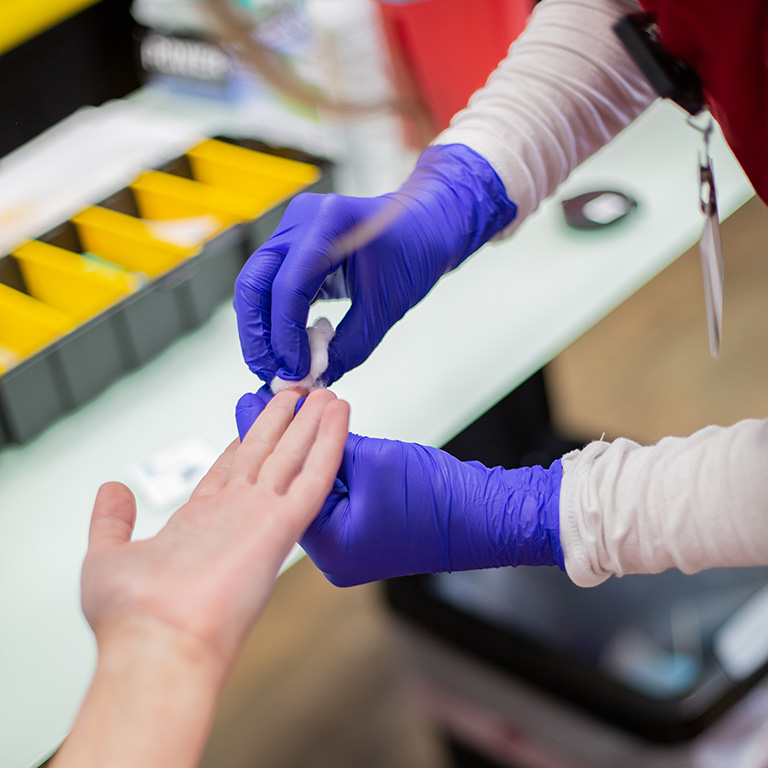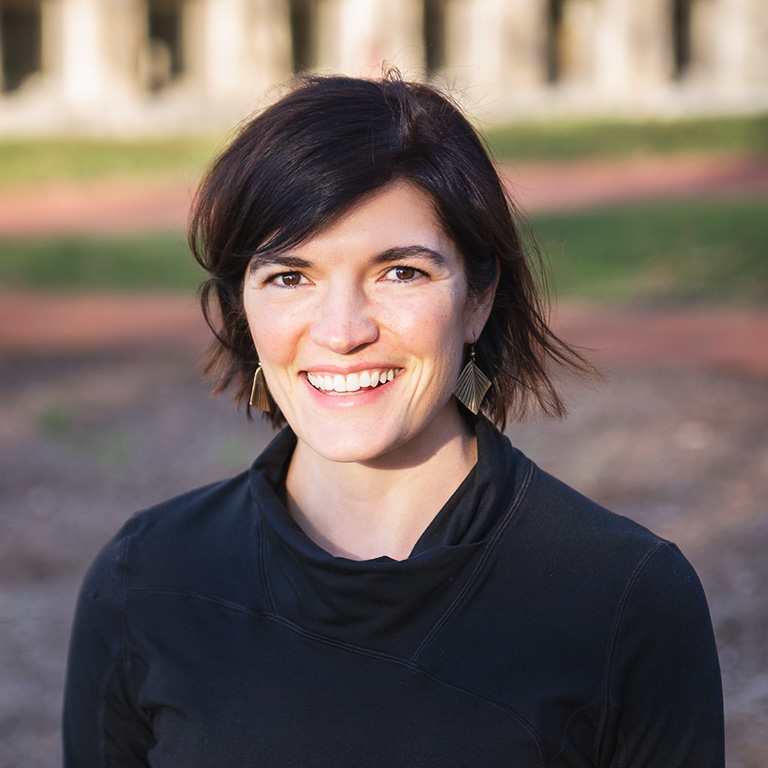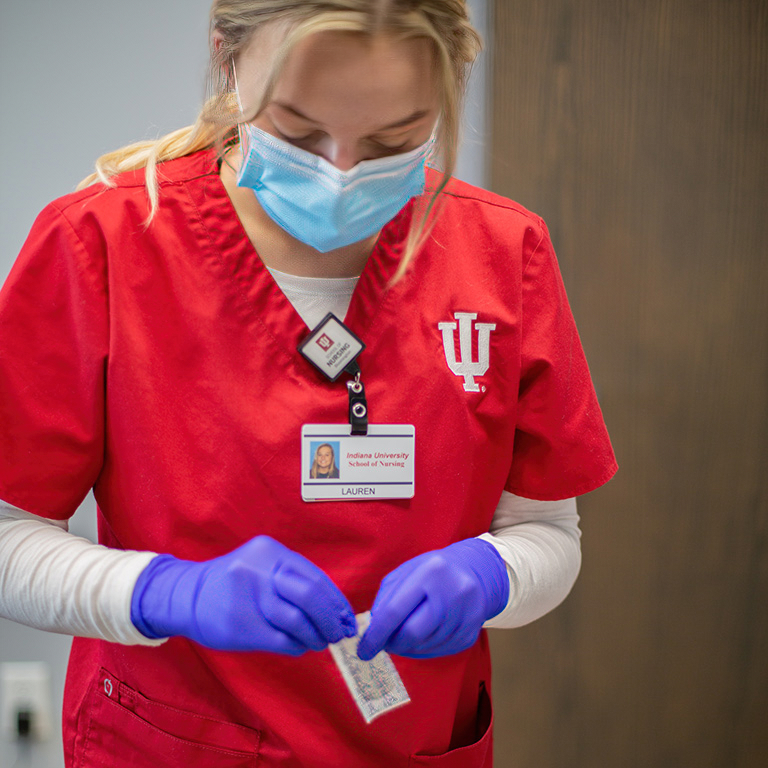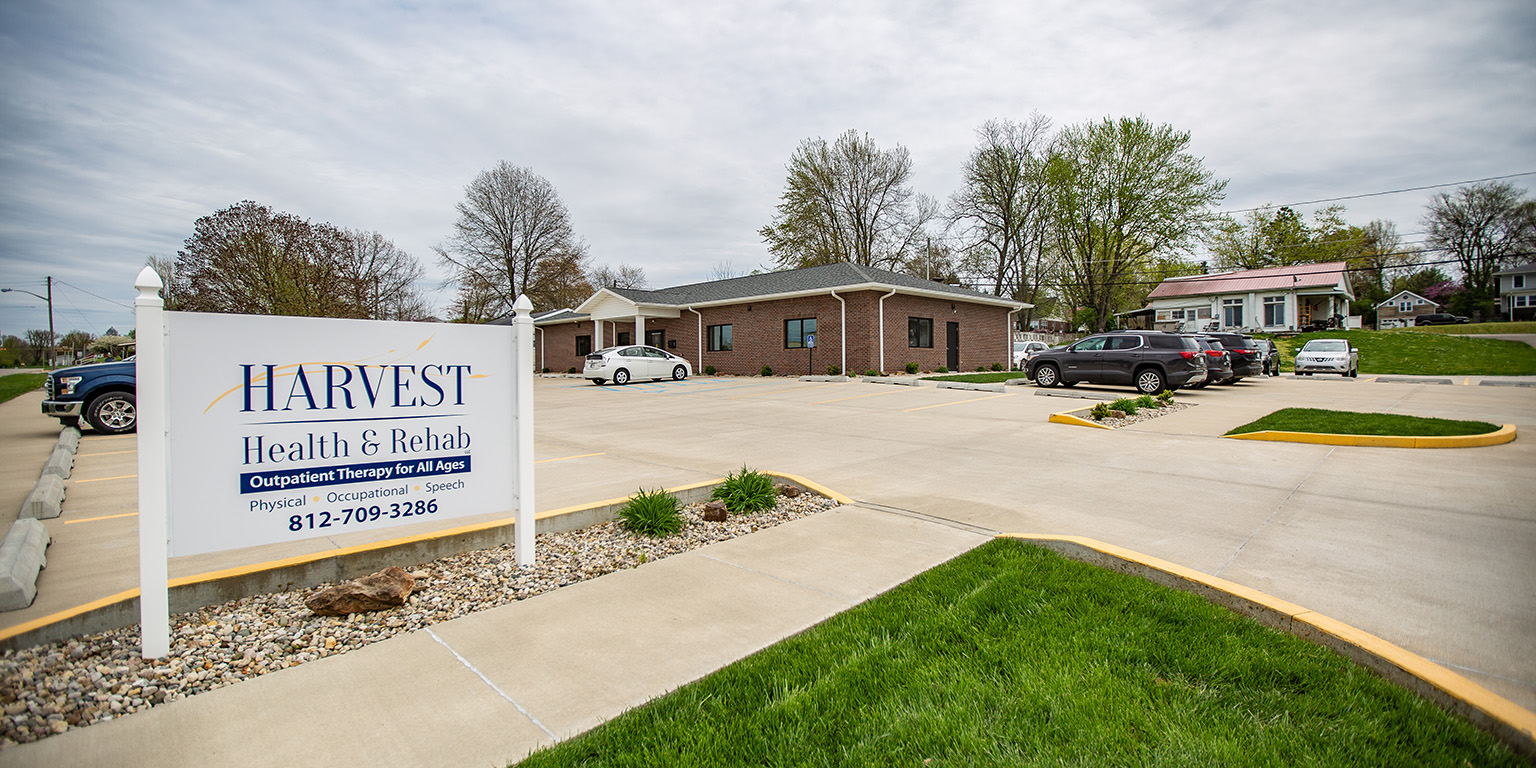A partnership between the Indiana University Bloomington School of Nursing (IUSON), the Center for Rural Engagement, Southern Indiana Community Health Care (SICHC), and several community partners is providing much needed clinical experience to nursing students and improving access to health care for residents in Orange and Martin counties.
Amy Todd has been a nurse for 20 years, and she’s become very familiar with Martin County’s health care. “Being a rural community, we do not have a lot of resources,” she says. The resources they do have in their county of approximately 10,200 people include one physician and three nurse practitioners, and a stand-alone urgent care clinic with one nurse practitioner. “Some residents use the urgent care nurse practitioner as their primary care provider.”
Other health resources like the once-a-week availability of an obstetrician or the mental health care option in a neighboring county are under-utilized by residents out of concerns of privacy and stigma.
Though the services they need exist in the state, to make use of them can often be difficult or impossible. “There is not enough of the proper resources available to the patient population locally,” she says. “Access to care is a problem. Many patients must travel 75 miles or farther for proper care for their complex diagnosis.”
“Patients in rural communities are no different than those in urban settings. They need post-stroke care, mental health services, complex therapies, hospice services, specialized providers, pain management, just to name a few, but those services are not found locally,” says Todd.







